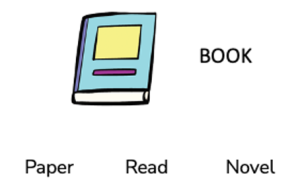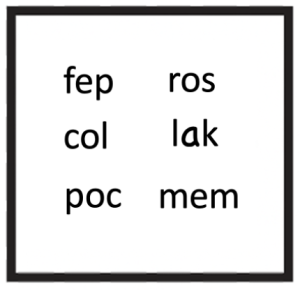KTEA-3 – Subtests and Practice Questions
What Subtests are on the KTEA-3?
The KTEA-3 consists of subtests or measures that assess specific literacy skills. The specific subtests within KTEA-3 may vary depending on the version and grade level being used, but here are the subtests and the skills you will encounter on the KTEA-3. Subtests can be selected to pinpoint a child’s strengths or areas of weakness in their reading readiness or ability. It’s important to note that not all subtests need to be administered, and in some cases, subtests may be grouped together to concentrate on a particular concept.
Oral Language
Listening Comprehension (Pre-K – 12+): Students are tasked with hearing a sentence or a recorded passage and responding vocally to questions posed by the examiner, which may be based on literal or inferential comprehension.
Oral Expression (Pre-K – 12+): The student is shown an image and asked to articulate a sentence about it. The complexity of the items progresses from having to identify one or two target words to respond correctly to more challenging items that require generating a response starting with a phrase or target word.
Reading
Letter and Word Recognition (Pre-K – 12+): Students identify letters and pronounce increasingly complex words. The student vocalizes the letters and words as swiftly as possible during two timed trials.
Reading Comprehension (Pre-K – 12+): This is an untimed assessment of silent reading comprehension. In the early stages, it involves matching symbols or words with corresponding pictures. Subsequent tasks may include reading simple instructions and responding through action. As the assessment progresses, it entails reading progressively complex passages and answering literal or inferential questions. In later grades, students are given five sentences to rearrange into a coherent paragraph, followed by questions about the paragraph.
Silent Reading Fluency (1 – 12+): The student silently reads simple sentences and marks “yes” or “no” to indicate whether the statements are true or false. This is a timed exercise lasting 2 minutes.
Reading Vocabulary (1 – 12+): Initial items require the student to point to a word among three options that has the same meaning as the picture and the target word alongside it. Later items involve reading a sentence and identifying the word within the sentence that has a similar meaning to the target word..
Nonsense Word Decoding (1 – 12+): The student applies phonics and structural analysis skills to decode increasingly complex nonsense words.
Phonological Processing (Pre-K – 12+): Students verbally respond to tasks that involve sound manipulation, such as rhyming, matching, blending, segmenting, and deleting sounds.
Associational Fluency (Pre-K – 12+): Students are instructed to produce as many words as possible within 60 seconds that fit a specified category.
Object Naming Facility (Pre-K – 12+): The student quickly names the pictured objects during two brief timed trials.
Letter Naming Facility (K – 12+): Students swiftly articulate a combination of upper- and lower-case letters during two short trials.
Word Recognition Fluency (1 – 12+): This assessment may include words that students should be able to read at a glance (sight words), without sounding them out. It evaluates their ability to swiftly recognize and read familiar words
Decoding Fluency (3 – 12+): Students may be asked to accurately decode both real and nonsense words, utilizing their knowledge of letter-sound relationships.
Writing
Written Expression (Pre-K – 12+): In pre-K and kindergarten, students trace and replicate letters, write letters, words, and sentences from dictation. From grade 1 onward, students complete writing tasks following a grade-appropriate story format. This may involve writing sentences from dictation, incorporating punctuation, capitalization, missing words, combining sentences, crafting compound and complex sentences, and composing an essay based on a story.
Spelling (K – 12+): The simplest items require students to write single letters representing sounds, while more advanced items involve writing increasingly complex (both regular and irregular) words from dictation.
Writing Fluency (2 – 12+): The student is prompted to craft one sentence for each presented picture, aiming to complete as many items as possible within a five-minute timeframe.
Prepare your child to excel on reading tests like the KTEA-3, help them avoid common test-taking mistakes, and ensure a fair evaluation of their abilities. Join Testing Mom today and get 100 Free Practice Questions!
What are some Practice Questions for the KTEA-3?
Oral Expression
Look at this picture. Tell me a sentence about the picture.
Example 1:

Answer: This is a brown teddy bear.
Example 2:

Answer: The boy with the yellow baseball cap caught one fish and hopes to catch many more.
Letter Naming/Letter Recognition
Parent Say:
Here are some letters (point to the letters). Tell me the names of as many letters as you can. When I say “Begin,” start here (point to the first letter) and go across the page (point). Point to each letter and tell me the name of that letter. If you come to a letter you don’t know, I’ll tell it to you. Put your finger on the first letter. Ready? Begin. (Time – 60 seconds)
N r T u v O P e a B
M S d X c A g K U R
Q L y j V G F e h i
Word Recognition
Next: Read across the page then go to the next line. Try to say each word. If you come to a word sound that you do not know, I’ll tell you. Put your finger on the first word and follow along with your finger as you say the words.
be no one show Iist
go quack ask egg cake
kite zoo chat wake upset
Silent Reading Fluency (timed)
Read the statement or question and circle or answer yes or no.
- A boy can run. Yes No
- Can a hammer sing? Yes No
- Are some grapes green? Yes No
- I have three hands. Yes No
Answers: yes, no, yes, no
Reading Vocabulary
Look at the picture and the word next to it. Choose the word from the choices below the picture that means the same thing as the word next to the picture.
Example 1:

Example 2:

Answers: Novel, Coat
Nonsense Word Decoding
Say – Look at this word (point to the first word on the practice form). It’s a make-believe word. Watch me read the word: /f/ /e/ /p/, “fep.” (point to each letter, then run your finger fast beneath the whole word) I can say the sounds of the letters, /f/ /e/ /p/, (point to each letter) OR I can read the whole word “fep” (run your finger fast beneath the whole word). Your turn to read a make-believe word. Read this word (point to the word ros). Make sure you say any sounds you know.

Object Naming
Name the pictures from left to right as quickly as you can.

Answer:
clock, dog, door, tent, candle, key
key, tent clock, candle, dog door
Writing Fluency
Write a sentence about the picture.
Example 1:

Example 2:

Sample Answers:
- Grandma is sitting in a chair.
- Alice and Henry play on together on the teeter totter.
How is the KTEA-3 Scored?
The scoring of the KTEA-3 is anchored in specific criteria for each subtest. These scores serve the pivotal role of pinpointing students facing potential reading challenges, thus guiding instructive decisions. Schools frequently establish benchmarks to appraise whether students meet grade-level expectations.
Raw Scores: These are the actual number of correct responses or points obtained by the individual on each subtest.
Scaled Scores: The raw scores are converted into scaled scores. Scaled scores have a mean (average) of 10 and a standard deviation of 3. This makes it easier to compare performance across different subtests.
Standard Scores: Scaled scores on each subtest are further converted into standard scores. Standard scores have a mean of 100 and a standard deviation of 15. These scores allow for comparisons with a larger population and are particularly useful for identifying strengths and weaknesses.
Percentile Ranks: The standard scores are used to calculate percentile ranks. A percentile rank indicates the percentage of individuals in the normative sample who scored lower than the individual taking the test. For example, if a student scores at the 75th percentile, it means they performed as well as or better than 75% of the normative group.
Composite Scores: KTEA-3 provides various composite scores, which are calculated by combining the results from different subtests to assess specific academic domains (e.g., reading, math, written language). Composite scores are also reported as scaled scores and standard scores.
Growth Scale Values (GSVs): For repeated testing, the KTEA-3 provides Growth Scale Values that allow for tracking an individual’s progress over time.
It’s important to note that specific subtests and composite scores can vary depending on the purpose of the assessment, the age of the individual being tested, and the specific version of the KTEA-3 used (e.g., Brief Form, Comprehensive Form).
See if TestingMom.com supports your child’s test by your school district. If you don't see your child's school district listed, check with us! We have practice for other tests as well.



Tell us about your experiences
One Response
Wanda
My 15-year old homeschool student had this test administered about 6 months ago by a licensed psychologist. When I saw the results, I nearly fainted. He scored at around the 1st percentile in three areas: silent reading, math fluency, and writing fluency. My question to the tester: did he just put down his pencil and refuse to answer questions? Since these were very startling results, I started doing research on the KTEA-III test, and found that it was primarily a “snapshot” test, and not a very accurate one at that. Parents, I highly suggest you spend some time preparing your students for ANY testing, by giving them access to Practice tests that are available online. Like Scouts say: Be prepared!